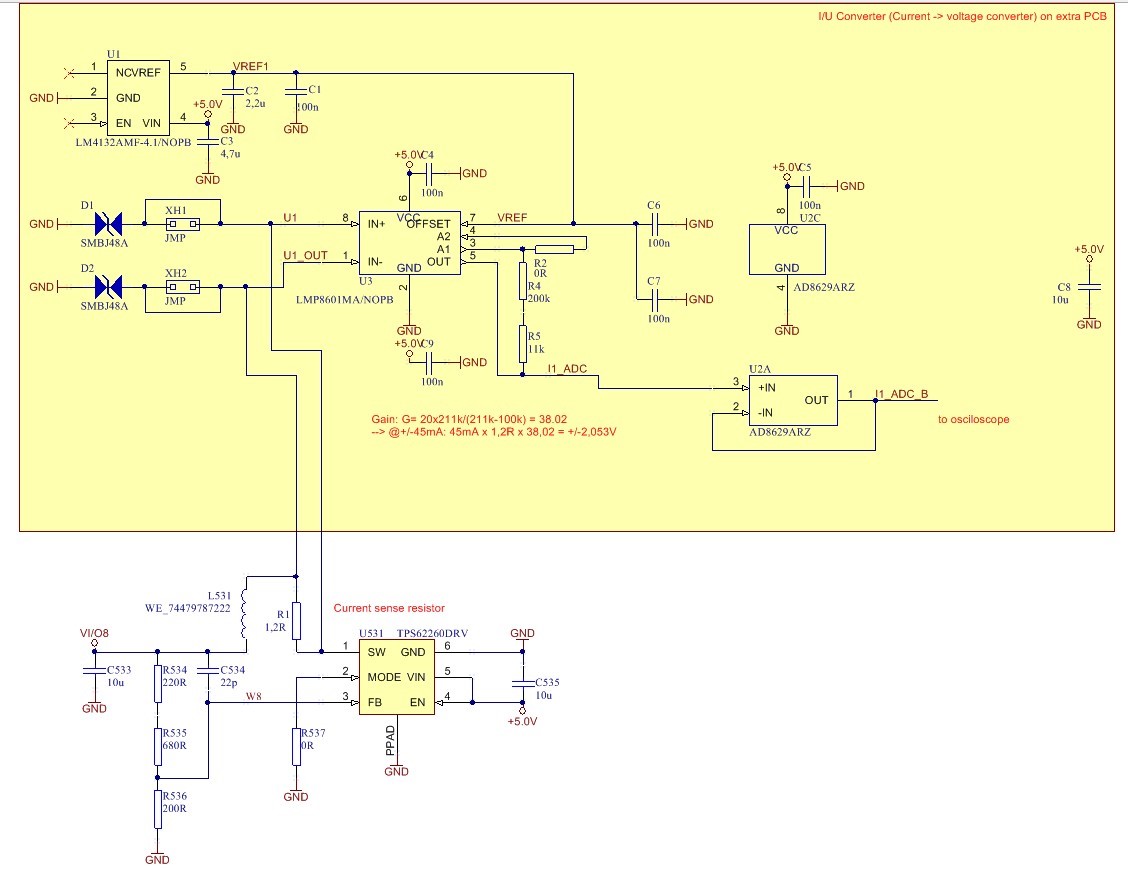Hello, I use the DC / DC converter TPS62260DRV on several devices. On a device 8 such converters are installed. On some modules (not all) it happens, then one or two of the 8 converters behave differently than the others. But that's not always the case in the same position of the LP. In principle, the converter works almost correctly, it comes out the voltage, which is adjusted by means of the feedback resistors. However, the ripple is different than the other DC / DC converters. The converter with higher ripple has a distinctly different behavior on the SW pin. I first swapped the passive components from a working one to a nonfunctioning one. There was no change. The faulty converter continued to have the higher ripple. Then I swapped the ICs. With the exchange also the mistake went along. So it must have something to do with the DC / DC converter itself. In the attachment I send some pictures. The error only occurs in PFM mode. If the converter is set in PWM mode (MODE = '1'), then the output voltages are the same from "working" to "non-functioning" converters. I operate the converter in the typical application circuit. CIN = COUT = 10uF, R1 = 0.9k, R2 = 0.2k, CFB = 22pF, MODE = '0'. Normally the circuit is a bit more complex, but I reduced it to that because the error occurs here as well. The load is 2 x 100nF + 1 x 4.7uF and an IC and the feedback resistors with 1.1k. Thus, the "base load" is about 3mA. Do you have any idea what could be the cause? Or can the converter be defective?
Fig.1: Output voltage 3.3V with "large" ripple (DC+AC waveform)
Fig. 2: same as above, but with SW pin (channel 3) Output voltage 3.3V with "large" ripple (DC (channel 2) +AC (channel 1) waveform)
Fig.3: Output voltage 3.3V with "normal" ripple (DC+AC waveform) -> IC is working correct
Fig. 4: same as fig. 3, but with SW pin (channel 3) Output voltage 3.3V with "normal" ripple (DC (channel 2) +AC (channel 1) waveform)
In Figure 3 and 4 there ist a single puls only, in figure 1 and 2 there are a small burst.
Regards



